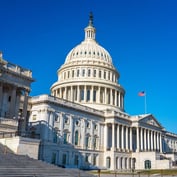By
In 2001, universal life insurance sales produced the highest growth rates theyve seen since ULs heyday in the mid-1980s, reports the year-end individual life sales survey of LIMRA International.
Annualized premium for the line rose by 18% over 2000 year-end results, says Elaine Tumicki, assistant vice president–product and distribution research, in an interview with NU. And it had a strong 4th quarter, with annualized premium up 25% over the same quarter in 2000.

The survey covers 2001 results of 84 life companies and their 73 subsidiaries, as well as 4th quarter results.
Though UL sales were up, Tumicki points out that overall life sales (for all lines tracked in the survey) were down across the board for the year. “Annualized premium for individual life was down 3%, face amount was down 7%, and number of policies sold was down 5%,” she says.
It was a “very interesting year,” Tumicki says.
Recent hot sellers–like variable universal life and survivorship life products–”cooled off” during 2001, she says. But products that have been in a state of decline–such as UL and whole life–showed “new signs of life.”
After the events of Sept. 11, 2001, the industry did see “some evidence” that individual life sales were surging, she points out. Now, eyes are turning towards 2002 results–to see whether the application increases noted in the 4th quarter of 2001 have translated into paid-for policies.
Tumicki attributes ULs resurgence in 2001 to the volatile stock market, and its dampening effect on sales of individual VUL and VL policies (which had annualized premium drops of 10% and 33%, respectively, compared to 2000).

This helped bump up UL market share from to 21% in 2001 from 17% in 2000, she notes. But “ULs 2001 market share is still well below its high in the mid-1980s, when it was just below 40%.”
As for individual WL, the survey shows annualized WL premium was up 5% in 2001 compared to 2000. Tumicki attributes much of the WL uptick to the stock market related fall-off in VUL sales.








 March 03, 2002 at 07:00 PM
March 03, 2002 at 07:00 PM










